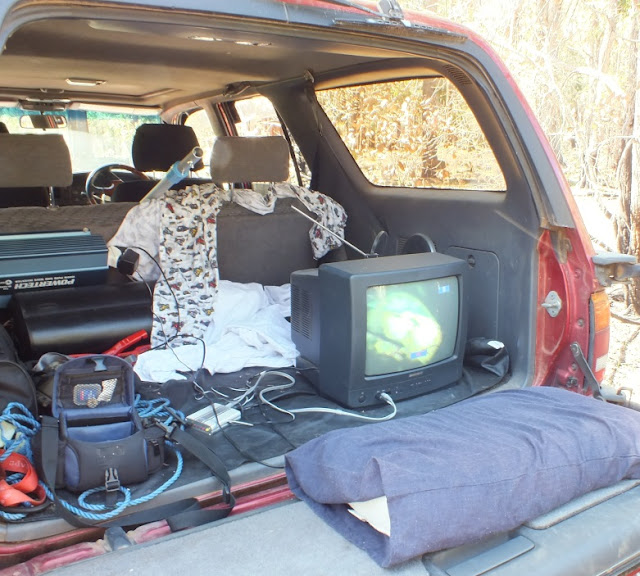The Safari set off through the ‘Back 110’ with the scent of
Eucalyptus oils in the air – get a lungful of that, the very essence of Australia.
The bush was humming to the sound of buzzing insects and the plaintive
whistling song of the Inland Thornbills otherwise all was almost silent.
Walking as quietly as possible down the gravel track that is Spud
Road seems very noisy but it’s a lot quieter than
walking on the dry leaf litter of the bush – think trying to walk silently on
packets of crisps!
The rectangular block is Maroo Wildlife Refuge.
We didn’t want to leave the track anyway as it gives the
best views in to the forest and only 25 yards in turn round you can no longer
see the track and you’re now lost never to be seen again!!!
Not only that
instead of a Pheasant clattering up from under your boot and frightening you
witless it’s more likely to be a grumpy Death Adder still groggy and bad
tempered from a few months hibernation you’re going to put your foot on – not
recommended!
Snakes were only just beginning to wake up and we only saw a
dead one on the road and heard of another from some friends, there were however
a few scurrying rustles in the dry leaves indicative of small reptiles on the
warmer afternoons...not that we saw any of those either.
No Numbats were seen on this walk through the bush, in fact
the bush can be a challenging place to see wildlife as it is quite dense here.
Many of the birds flit around in the higher canopy against the bright light and
quickly being lost in the shadows and behind the multitude of leaves.
Almost all the small mammals are nocturnal and many spend the day curled up in tree hollows. Only one way to see if there's anyone home is to put a small wireless camera on a very long pole and have a look using the telly in the back of the car.
Nothing was found in any of the hollows we looked in but they were marked for later as they can be used for releasing rehabilitated wildlife into.
Numbats like large hollow logs to hide in and are unique in that they are the only diurnal small marsupial. The hollows need to be a bit smaller than this one and possibly not all the way through.
They feed on termites which themselves are only active during the warmth of the day. Some hills we found had been dug in to but that was more likely to have been an Echidna.
Inside an old one you can see the galleries
Maroo is all about getting injured wildlife bacck to full health and then back into the bush.
Here's one of two Emu chicks that were brought in.
Where to next? More adventures tomorrow.
In the meantime let us know what's being rescued in your outback.
On a much more local note the Woodpigeon we saw winging solidly southwards along the seawall at lunchtime was Patch 2 tick number 81.









2 comments:
Such a wonderful trip. Enjoying the posts.
An interesting read Dave, that Emu chick looks like a juve GC Grebe that's been on steroids.
Post a Comment